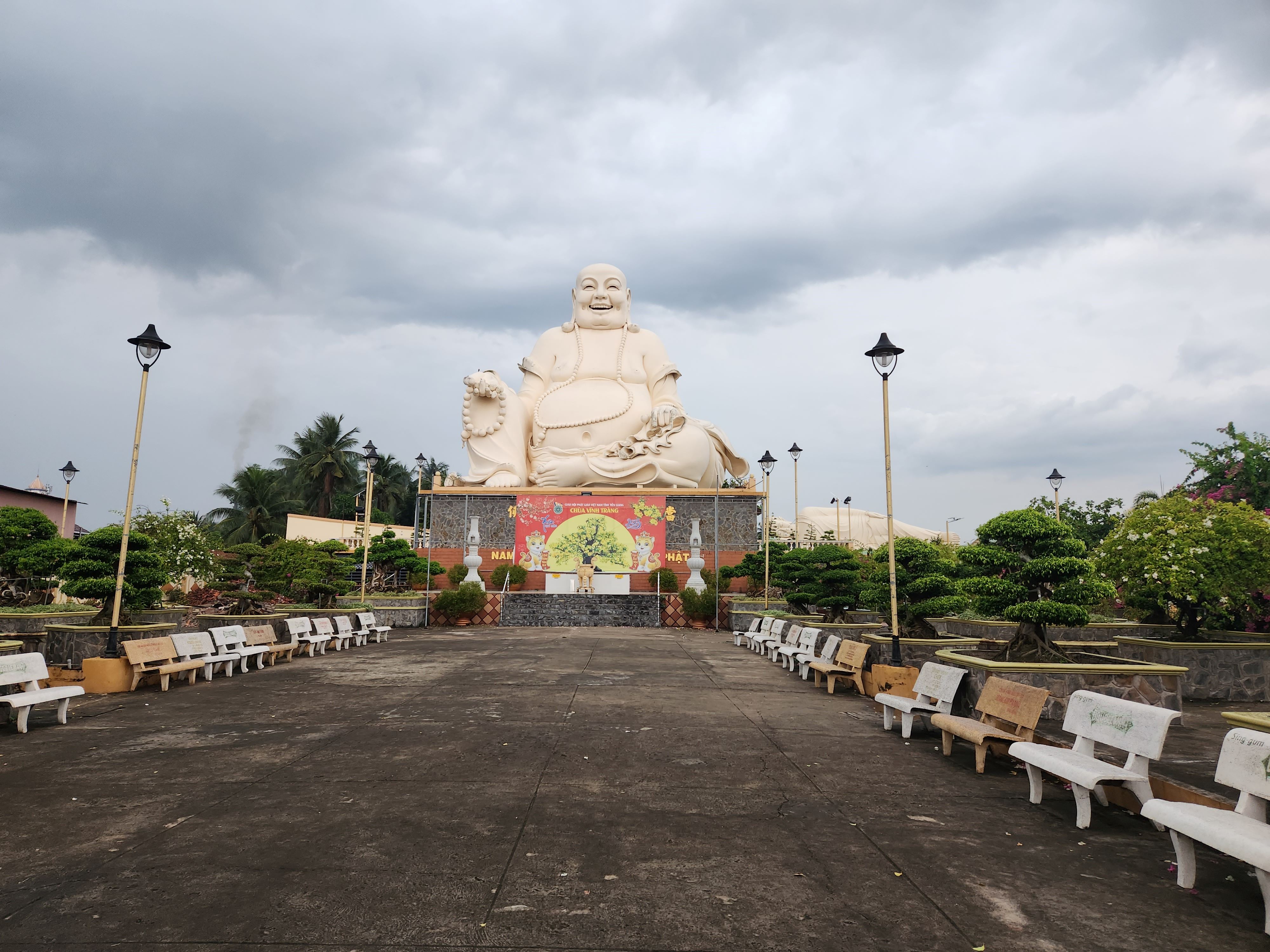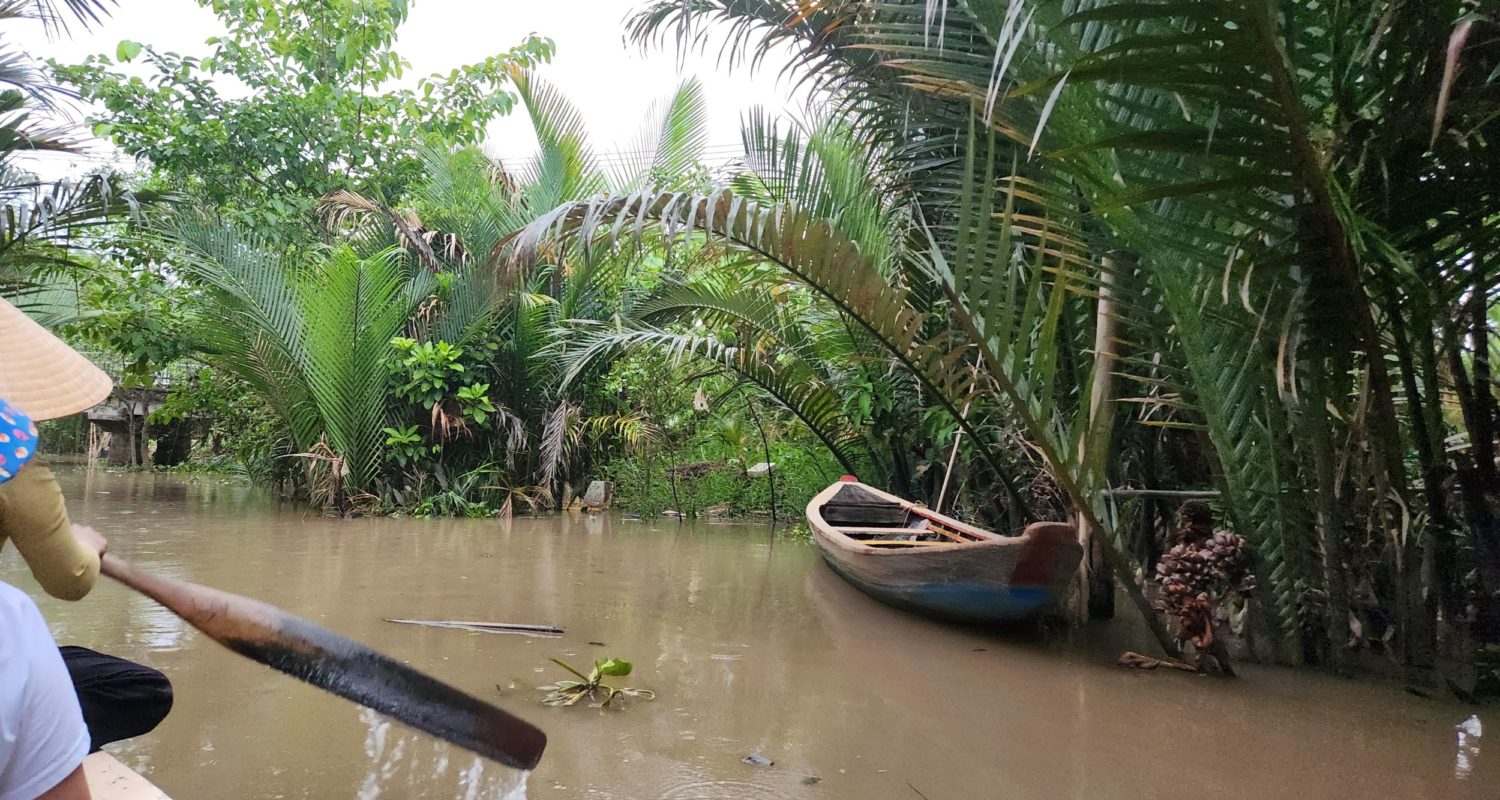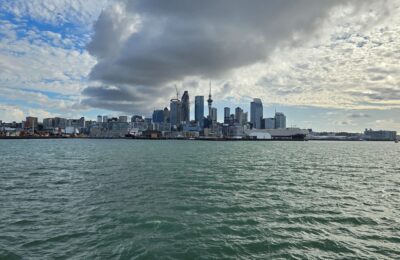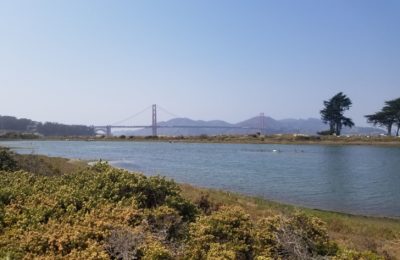One of the most popular day trips from Ho Chi Minh City, Vietnam is to the Củ Chi Tunnels and/or Mekong River Delta. If you’re short on time, you can combine these into one full-day trip. You can also take a half-day trip to each area on separate days. Another possibility is to stay in the Mekong River Delta and immerse yourself more in the area.
Because we only had three days in Ho Chi Minh City and wanted to see both areas, we opted for a full-day trip to both. This option was a jam-packed 12-hour day of sightseeing and driving, but also most efficient for our schedule.
If you only have a limited amount of time, but want to choose just one area to see, I recommend the Củ Chi Tunnels day trip. While they are both historically significant areas in Vietnam that have become curated tourist experiences, the Củ Chi Tunnels felt more educational. It scratched more of that travel itch of learning about history and culture in context. Meanwhile, the Mekong River Delta tour felt like more of a tourist trap, with people trying to sell you things at nearly every turn.
We met a couple in Sapa who told us they’d stayed at an eco-lodge in the Mekong River Delta. If I return to this region, I’d probably try to do something like that.
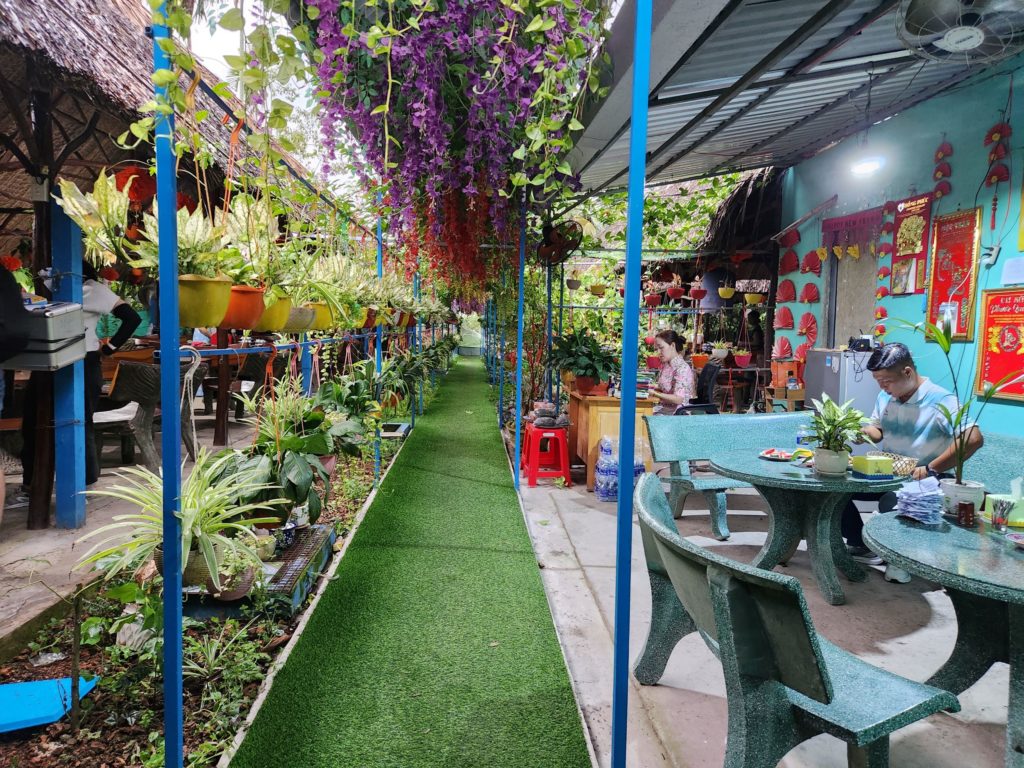
Finding a Tour:
You can do a Củ Chi Tunnels day trip independently via a bus or car hire. Once you get to the tunnels, you can also get a guide along with your ticket. I don’t know how much you’d get out of a Củ Chi Tunnels day trip without a guide to share their knowledge of the site. I didn’t choose this option for myself, but this blog post details specifics on how to get to the tunnels using the public bus. Similarly, this blog discusses going from Ho Chi Minh City to Can Tho, a large city in the Mekong Delta, via public bus. So it is definitely possible to visit both places on your own.
I don’t know if you could easily tour both in one day relying on public transportation, though. A car hire might be more possible, but also likely more expensive than going with a tour group.
Because we wanted to maximize our time, we chose to do the full-day Củ Chi Tunnels and Mekong River Delta day trip group tour via Airbnb Experiences. Platforms like Viator and Get Your Guide also offer tours. They typically have similar itineraries and prices. The main complaints for every tour I considered was that they felt a little rushed and packed a lot into one day. However, if you want to take a day trip to both of these places, you have to expect that.
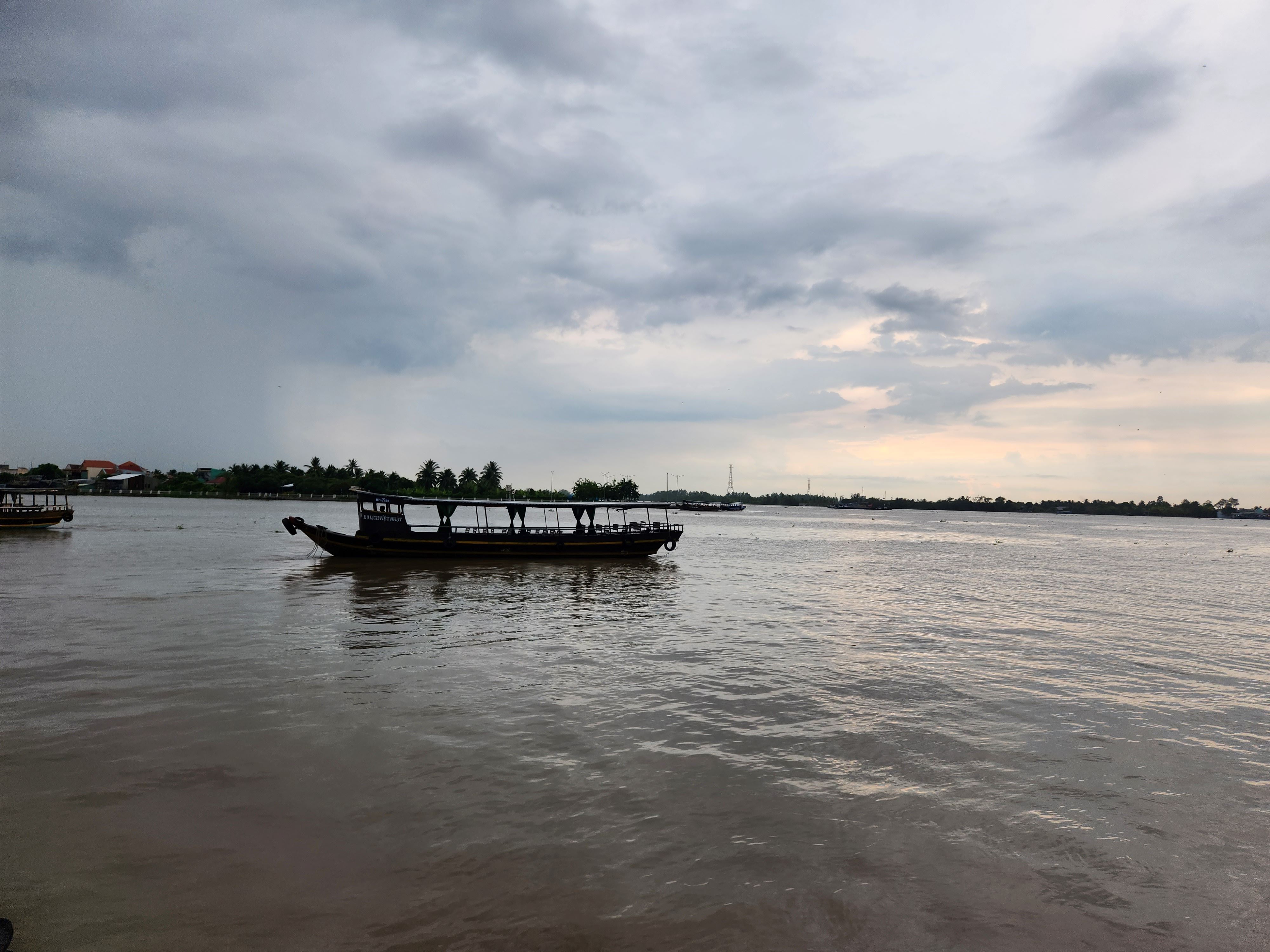
I chose the Airbnb Experiences tour partially because the person running the tour said they were from the Mekong Delta. I was hopeful it might be a more local experience. The tour description also said it was a small-group tour and guaranteed no more than 10 people per group. Other group tours I saw took bigger groups around 20-30 people.
Start of the Tour:
Our tour included pick-up and drop-off from a hotel or Airbnb in District 1 of Ho Chi Minh City. District 1 is the main tourist area of Ho Chi Minh City, so most people choose to stay in this neighborhood when visiting the city. Most tours I saw offered pick-up and drop-off in District 1, but also offered a central meeting point in the area for anyone staying outside of the neighborhood.
Pick-up time was listed as 7:30-8 a.m, depending on location. The air conditioned van picked us up at 7:35, and we were the second pair in the van. The tour size was eight total people. It was a nice small group tour.
Once everyone was on board, we set off in the direction of the Củ Chi Tunnels, about 90 minutes from Ho Chi Minh City. The tour guide gave us a brief history lesson on the significance of the Củ Chi Tunnels, and sent everyone in the van a documentary we could watch during our ride. This documentary is available at the Củ Chi Tunnels site, but because we were on a full-day tour to both the tunnels and the Mekong Delta, we wouldn’t have enough time to watch it there.
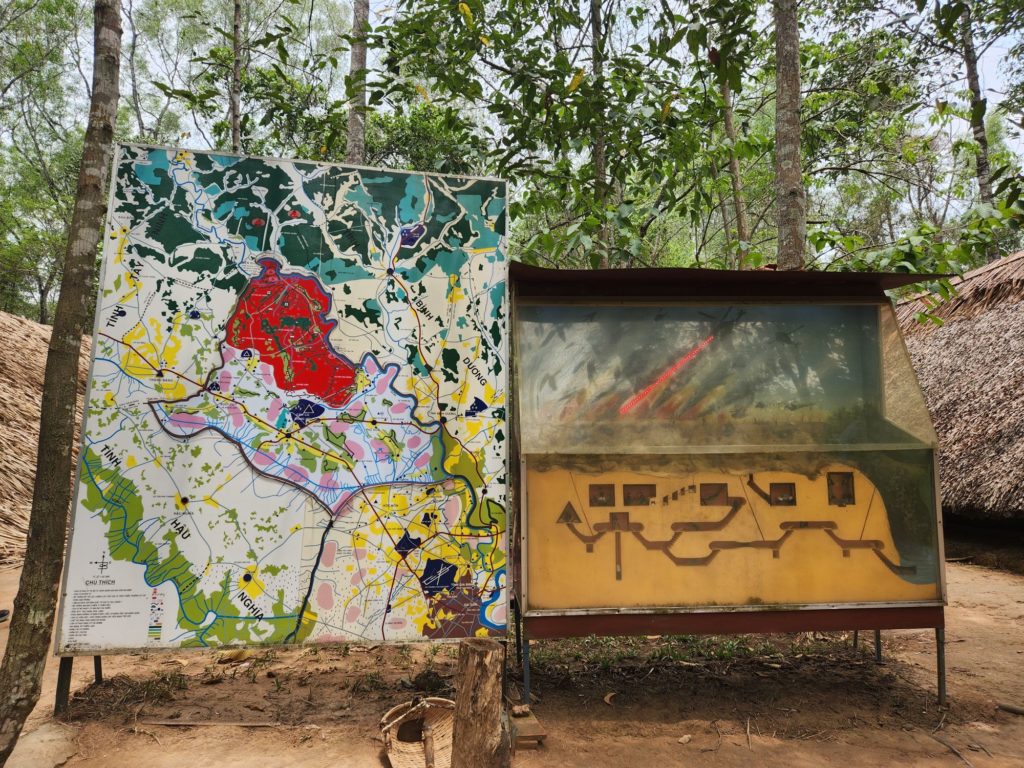
Rest Stop:
About halfway to the tunnels, we stopped at a rest stop with bathrooms, coffee, snacks and souvenirs. The primary reason the tour groups make a point of stopping here is for the souvenirs. This rest stop employs people who were impacted by the effects of Agent Orange, a dangerous chemical the US used against the Vietnamese people during the war. This chemical caused disabilities for the people who were exposed, and their children. In fact, some babies are being born even today with effects from Agent Orange.
The people employed at this rest stop are primarily making art from different natural materials ranging from mother of pearl to duck egg shells. Part of this rest stop includes a brief art making demonstration and explanation about its importance. Then, there is a small shop where you can buy the art. They say 60% of the proceeds go to Agent Orange victims.
Getting to the Củ Chi Tunnels on the day trip:
After the rest stop, we drove about 45 minutes to the Củ Chi Tunnels and officially began our day trip.
During the American/Vietnam War, the Vietnamese army established a vast and complex tunnel system throughout the country and parts of broader Indochina. To this day, I’m not sure if the full extent of the tunnel system has been completely uncovered. Vietnamese soldiers used the tunnels to transport goods, weapons and, most importantly, information. They also used them to hidee from the American soldiers, build new weapons and strategize. Near these tunnels also often laid traps for the American soldiers.
In the present day, you can visit the tunnels at Củ Chi to see them first-hand, along with the soldier traps and recreations of the workshops. You can also learn more about the tunnels’ uses and how the Vietnamese soldiers kept them hidden.
Our visit to the tunnels started with some background on the history and significance. Then, we got a demonstration of the “tiger traps”. A large trap was on display as we entered the Củ Chi Tunnel area. Our guide took a stick and showed how a soldier could step onto the faux-grass covering and fall into the pit of spikes. Despite the look of the spikes, these traps were meant to scare and intimidate more than injure.
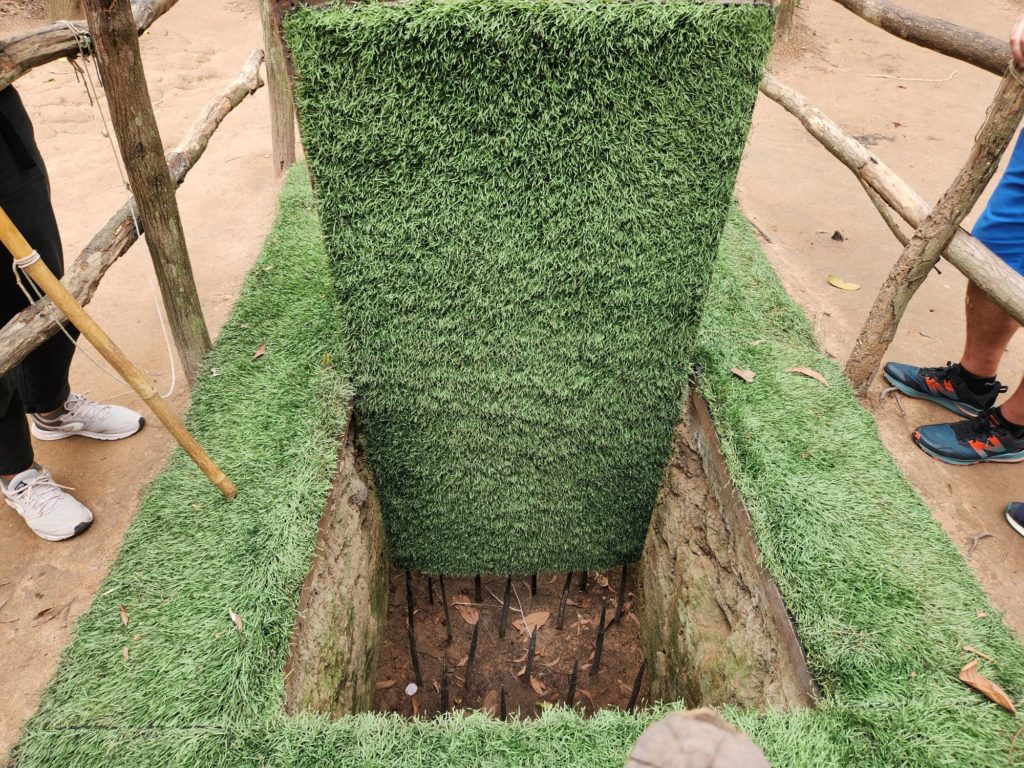
We soon saw the traps meant to injure, and they looked much more painful. These traps had various names like “armpit trap” and “rolling trap.”
We also saw recreations of what the weapons workshops looked like. And we learned about the special shoes the Vietnamese soldiers fashioned, which made it look like the wearer was walking in two different directions. The purpose of these sandals was to avoid leading the American GIs to the tunnels.
The most interesting part of our tour was experiencing a little bit of what it was like inside the tunnels.
These tunnels have been increased in size to better accommodate tourists, but still give a very small taste of what they were like when they were in use.
We crawled through one of these 100-meter long tunnels. It had been widened but got smaller as you crawled deeper into it. There were exits at 20, 40, 60 and 80 meters in, but we wanted to go all the way. Even though it had been expanded, it was still quite cramped, and we had to bend over and even crawl at points to move through them. I can’t imagine how people lived in and moved through these tunnels for years.
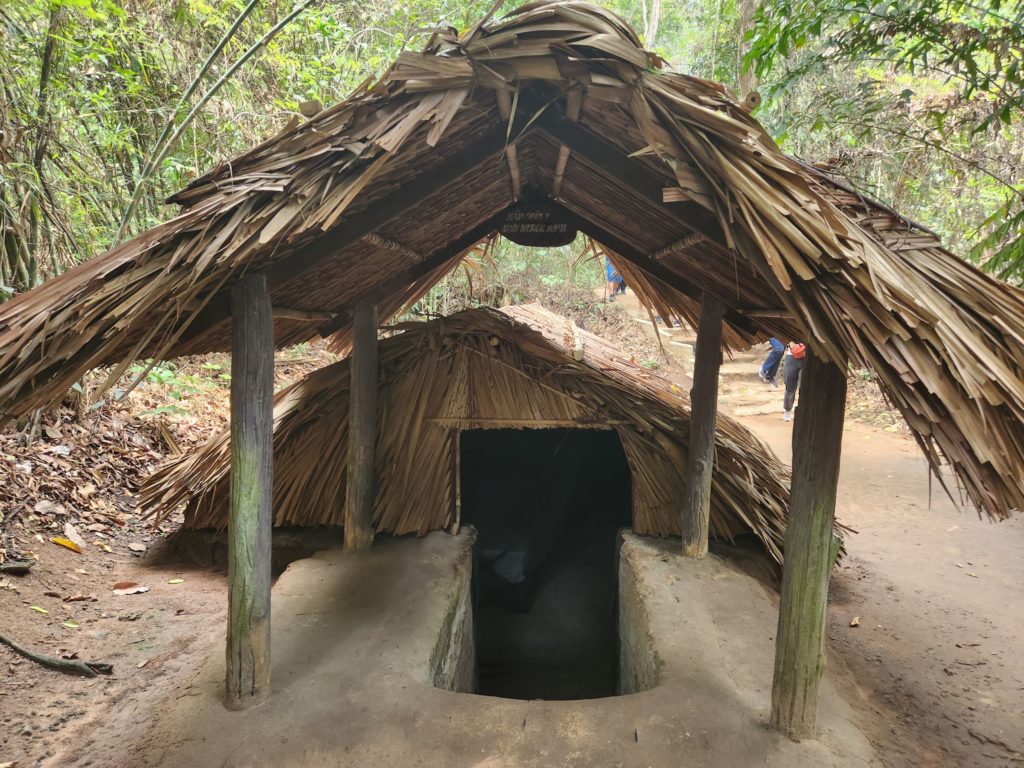
There is also an opportunity to go down one of the tunnel trap door entrances. To do this, you lower yourself into a small hole in the ground and cover your head with the trap door. I could only bring myself to stay under the ground for a few moments in the pitch black because it was so creepy. Then, you have to push yourself up out of the hole. You might want to only try this if you have decent upper body strength. The tunnel entrance is quite narrow, so most people in our group opted out of this experience.
To end our visit to the tunnels, we had some tea and snacks.
The tea was made from the pendan plant. I’d never had pendan before this trip, but it quickly became one of my new favorite flavors. They also served some boiled cassava, which they explained was very important for nourishment during the war. The cassava didn’t taste like much on its own. A sugary peanut dip made it tastier.
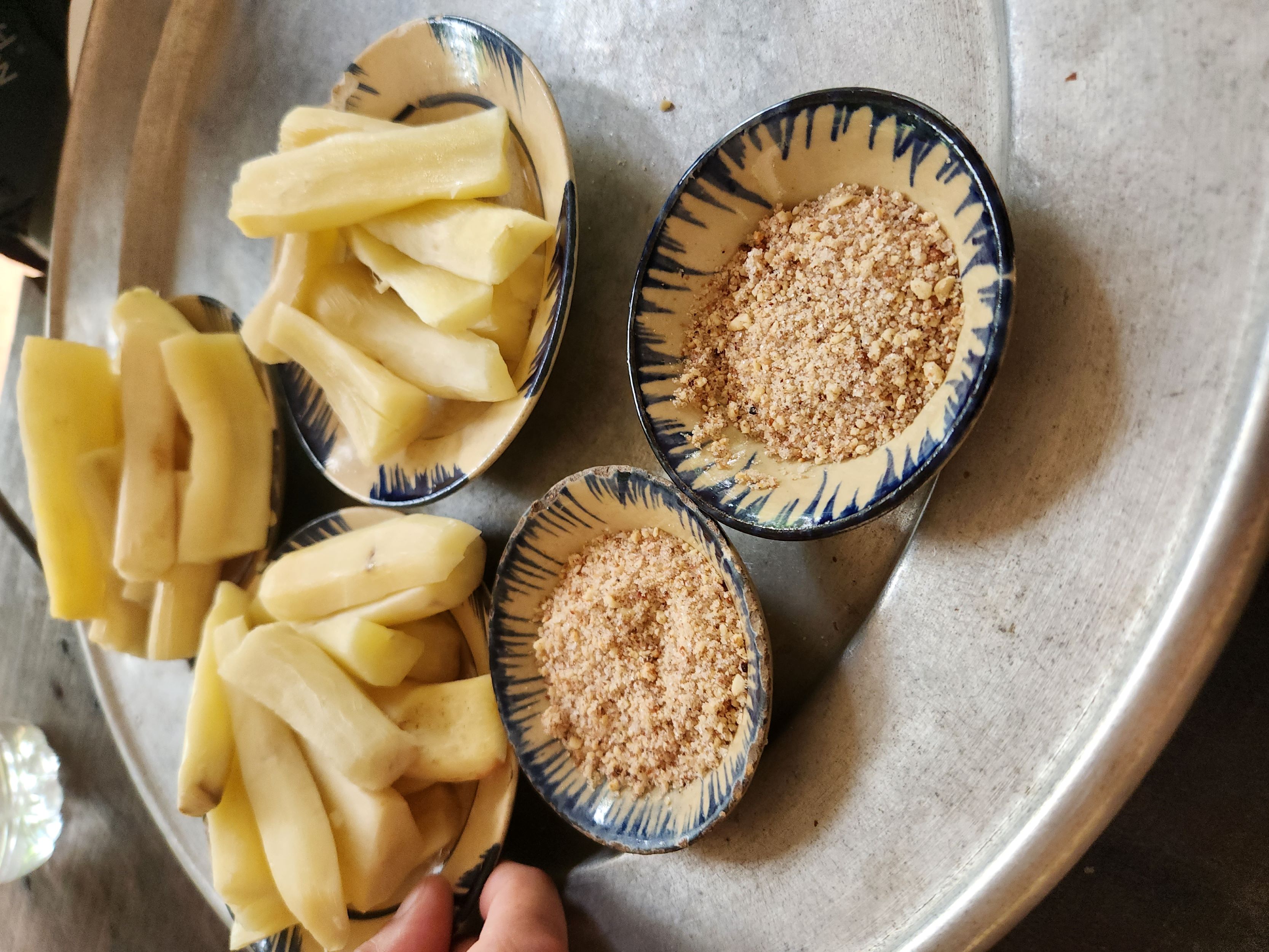
Although we got some background on the tunnels during the tour, I was so glad we’d visited the War Remnants Museum the day before making this trip. I think it really enriched the experience.
Note that most tours also offer the option to participate in a shooting range. No one in our group felt too inclined to try it.
Mekong River Delta Visit
Our visit to the Củ Chi Tunnels wrapped up a bit after noon. We piled back into the van to drive another 90 minutes to the Mekong River Delta
While I was glad I saw the Mekong Delta due to the economic, historical and cultural significance of the Mekong River, it honestly was not my favorite part of the trip. This part of the tour felt more rushed and touristy in the sense that everyone was putting on a show and constantly trying to sell things to us.
The trip started with a boat ride out to a restaurant on one of the islands in the river. I enjoyed the ride, passing by different villages. We even saw a boat making area. Lunch included various dishes, including Mekong River fish, which was interesting to try but didn’t have a strong taste.
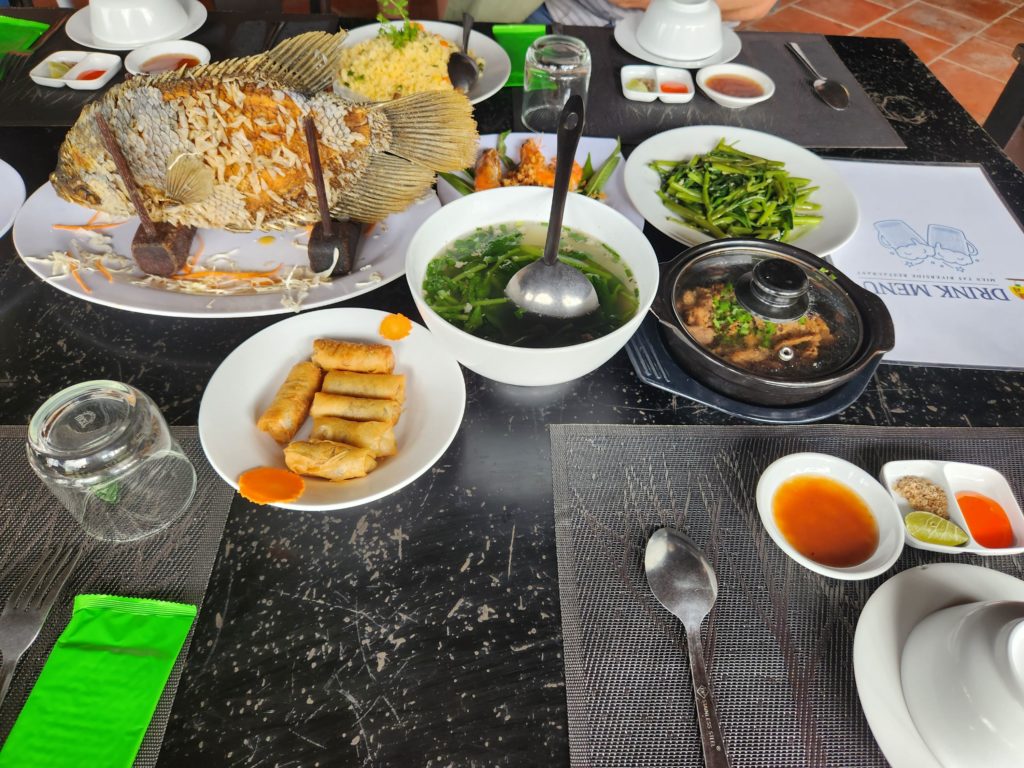
After lunch, we saw a demonstration of coconut candy, which we then got to sample. Here, we also tried snake wine, a fermented rice wine with a cobra inside of it. Snake wine is significant for its perceived medicinal properties dating back to China’s Zhou Dynasty. But some also consider it controversial.
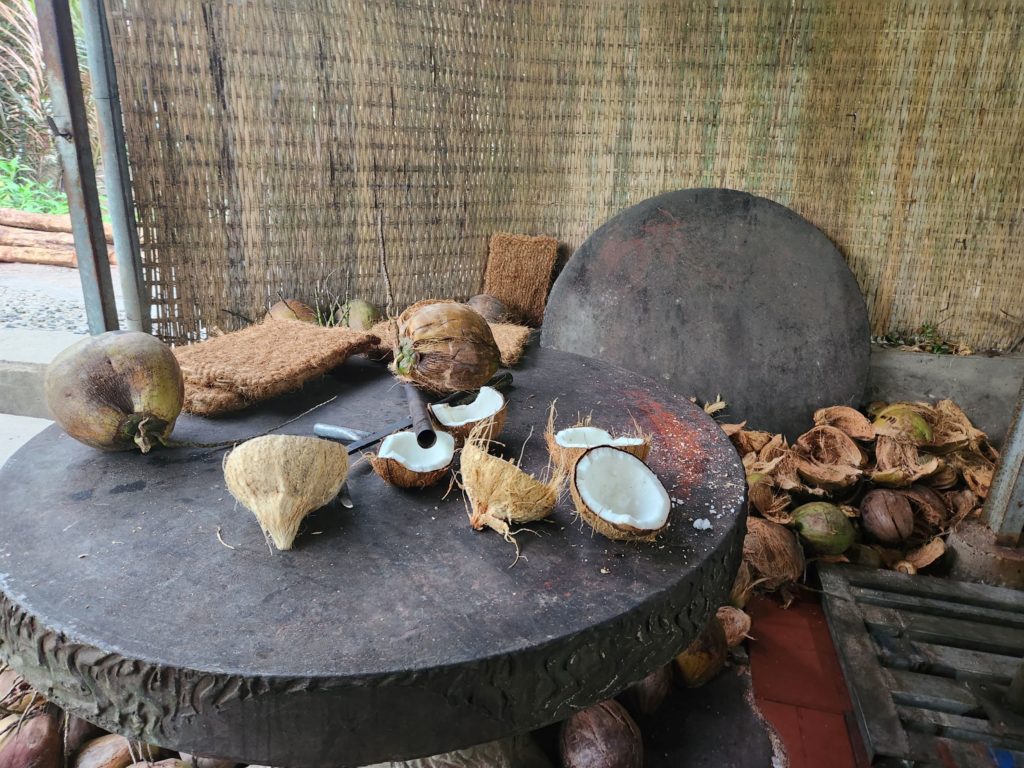
Then, we were paddled in a wooden row boat on the river to one of the villages.
At the village, we sampled fruit grown on the island while women put on a musical performance. The fruit was fresh and delicious. The performance enhanced the feeling that this activity was incredibly touristy.
We then walked through the village, which had many flowering beautiful plants that slightly triggered my allergies. Next on the itinerary was a visit to a bee hive. However, it had begun to rain, meaning we couldn’t see the actual hive. We did still get to have tea made with honey from the hive and snacks, which was honestly more exciting to me.
Then it was time to return to the van. On the boat, we were given a fresh coconut to drink, which was a nice touch.
Vĩnh Tràng Buddhist Temple
On the way back to Ho Chi Minh City, we made a brief stop at the Vĩnh Tràng Pagoda. This Pagoda is one of the best known Buddhist temples in the Mekong Delta area.
The temple has several large Buddha statues, including a Reclining Buddha. It’s a large temple, but we only had about 15 minutes to explore as it was getting late. Because of the long day and the rain, most people in our group opted to stay in the van, or to only get out for a few minutes to see the temple. However, I enjoyed seeing these Buddha statues and the pagoda up close.
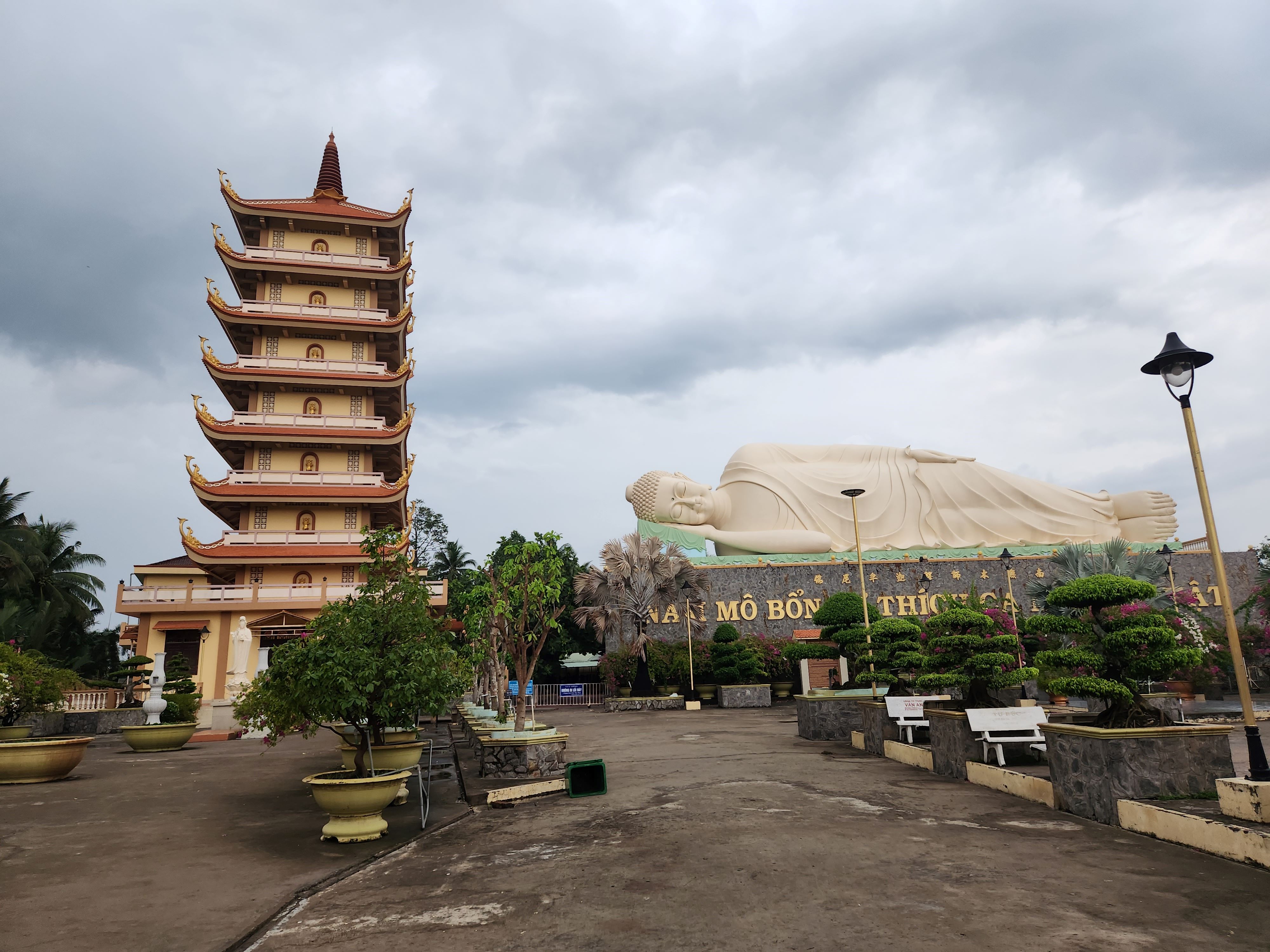
Return to Ho Chi Minh City
About 12 hours after the trip began, the van dropped us off back at our Airbnb in District 1 of Ho Chi Minh City. It was just in time to catch a happy hour at a nearby speakeasy.
All-in-all, I’m glad I got to visit both the Củ Chi Tunnels and the Mekong Delta for their historical and cultural significance. If I had to redo the trip, I’d probably opt for just a half-day tour to the Củ Chi Tunnels. If I had more time, I’d stay for a few days in the Mekong River Delta to experience it in more depth. Our tour guide was very good. I think our itinerary was pretty standard based on other tours I researched. But trying to fit two major tours in different areas into a single day is always going to be rushed.
